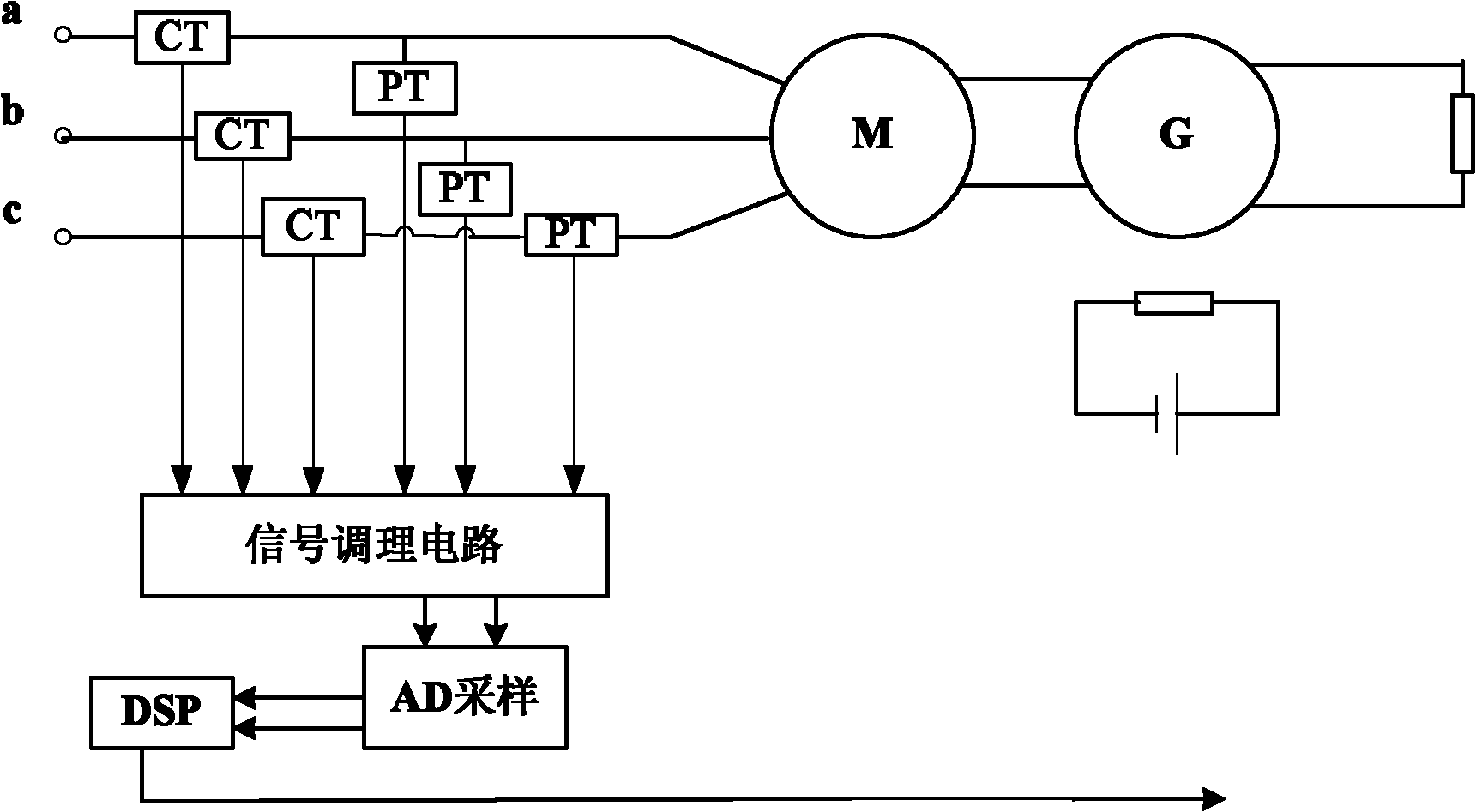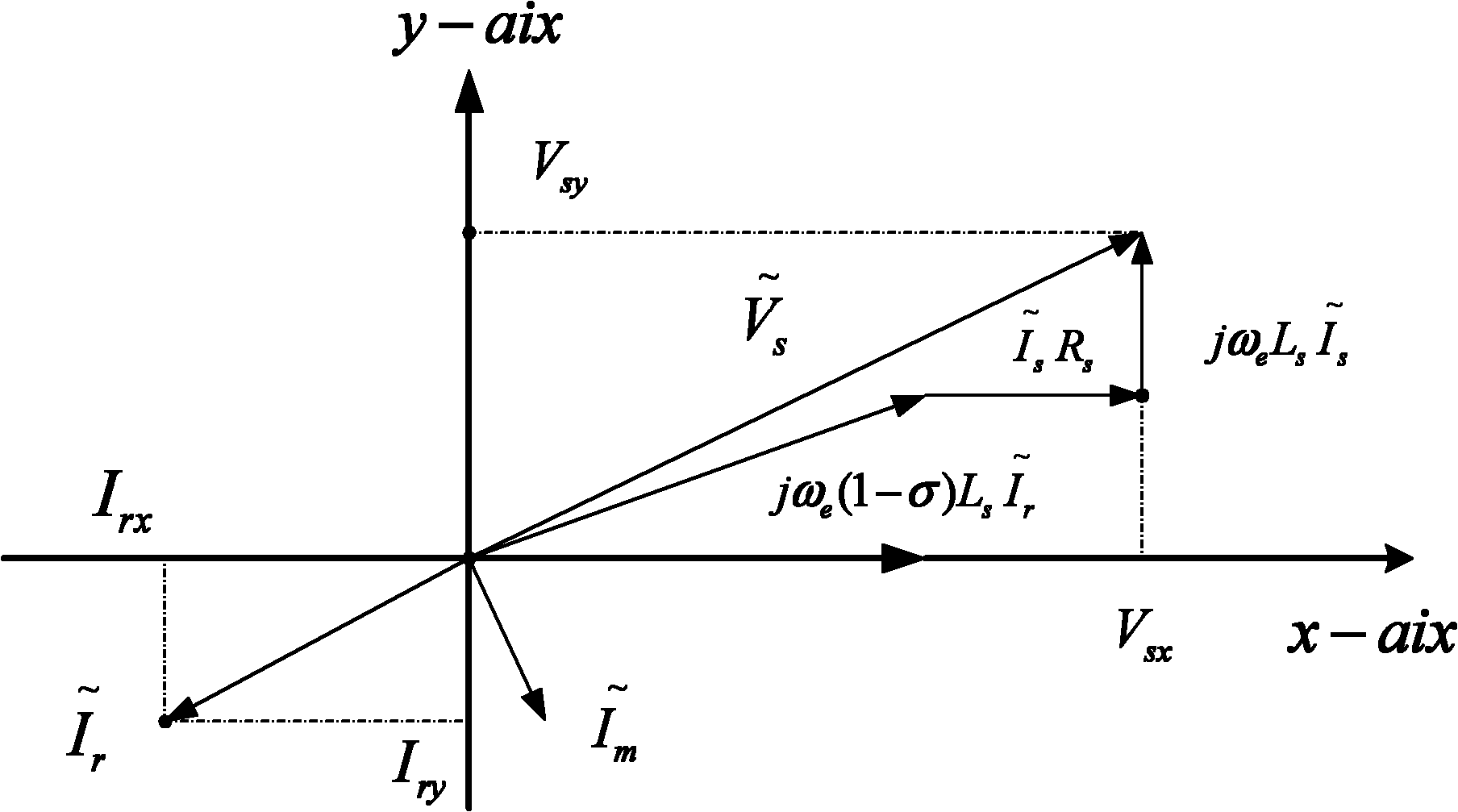Rotor-groove harmonic analysis based method for identifying temperature of sensorless rotor for submersible motor
A technology for sensor rotors and submersible motors, which is applied to thermometers, thermometers, instruments, etc. that use electric/magnetic components that are directly sensitive to heat, and can solve problems such as strong dependence on motor parameters
- Summary
- Abstract
- Description
- Claims
- Application Information
AI Technical Summary
Problems solved by technology
Method used
Image
Examples
specific Embodiment approach 1
[0040] Specific implementation mode one: the following combination figure 1 with figure 2 Describe this implementation mode, this implementation mode comprises the following steps:
[0041] Step 1: collecting the three-phase stator voltage and three-phase stator current of the submersible motor;
[0042] Step 2: respectively process the three-phase stator voltage and the three-phase stator current through the signal conditioning circuit, and use the processed signals as the stator original current input signal and the stator original voltage input signal;
[0043] Step 3: Perform harmonic analysis on the frequency spectrum of the stator original current input signal using fast Fourier transform FFT to obtain the fundamental wave and each harmonic amplitude of the stator three-phase current, that is, to obtain the rotor slot harmonics of the submersible motor f sh for:
[0044] Formula one: f sh = f 1 ...
specific Embodiment approach 2
[0065] Embodiment 2: This embodiment is a further description of Embodiment 1. The fast Fourier transform (FFT) is a base-2 power method or an arbitrary base method.
specific Embodiment approach 3
[0066] Specific implementation mode three: the following combination Figure 4 to Figure 11 Describe this embodiment, this embodiment is the further description to Embodiment 2, the calculation formula of the base 2 power method of described Fast Fourier Transform FFT is:
[0067] x L ( K L ) = x L - 1 ( K L ) + x L - 1 ...
PUM
 Login to View More
Login to View More Abstract
Description
Claims
Application Information
 Login to View More
Login to View More - R&D
- Intellectual Property
- Life Sciences
- Materials
- Tech Scout
- Unparalleled Data Quality
- Higher Quality Content
- 60% Fewer Hallucinations
Browse by: Latest US Patents, China's latest patents, Technical Efficacy Thesaurus, Application Domain, Technology Topic, Popular Technical Reports.
© 2025 PatSnap. All rights reserved.Legal|Privacy policy|Modern Slavery Act Transparency Statement|Sitemap|About US| Contact US: help@patsnap.com



